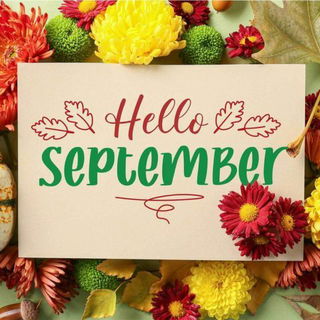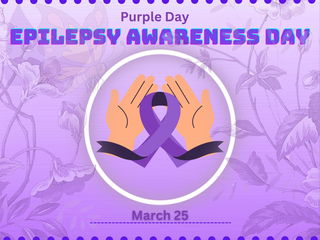Birth or birth month flowers are significant in many cultures, as they have unique meanings associated with different months and add a special charm to birthday celebrations.
From the energetic and vibrant daffodils of March to the elegant and romantic roses of June, discovering our birth month flowers could be a delightful journey.
- January birth flowers: Carnation and Snowdrop
- February birth flowers: Violet, Iris, and Primrose
- March birth flowers: Daffodil and Jonquil
- April birth flowers: Daisy and Sweet Pea
- May birth flowers: Lily of the Valley and Hawthorn
- June birth flowers: Rose and Honeysuckle
- July birth flowers: Larkspur and Waterlily
- August birth flowers: Gladiolus & Poppy
- September birth flowers: Aster and Morning Glory
- October birth flowers: Marigold and Cosmos
- November birth flowers: Chrysanthemum and Peony
- December birth flowers: Narcissus, Poinsettia, and Holly
The tradition of dedicating particular flowers to each month dates back centuries, with each flower portraying certain characteristics or feelings.
This norm has made birthdays way more meaningful, as individuals can embrace the beauty and symbolism of their respective birth flowers.
Birth flowers are intricately tied to the seasons, aligning with the time when they are in full bloom.
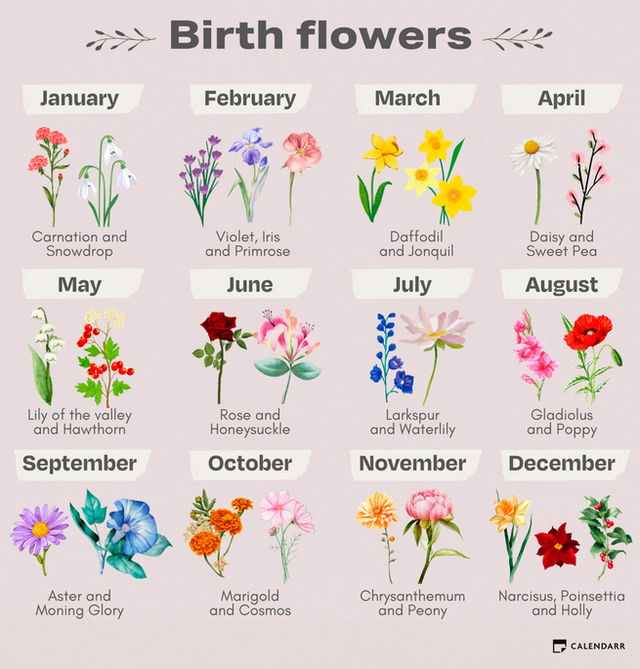
January: Carnation and Snowdrop
 January usually has two birth flowers, the carnation, and snowdrop. Carnation is typically known for its delicate petals and vibrant hues, whereas snowdrop is known for blooming in winter and its interesting characteristic of peeking through the snow.
January usually has two birth flowers, the carnation, and snowdrop. Carnation is typically known for its delicate petals and vibrant hues, whereas snowdrop is known for blooming in winter and its interesting characteristic of peeking through the snow.
Carnations are available in different colors, and each color symbolizes a different meaning. White carnations symbolize pure love, yellow signifies a longing with “wish you were here,” and pink expresses the sentiment “you're unforgettable.”
The snowdrop symbolizes hope, purity, and the idea of new beginnings. It grows well in the cold winter, reflecting the notion of starting fresh and looking forward to spring. That's why it's a good and meaningful choice to represent January as a birth flower.
February: Violet, Iris, and Primrose
 February has three birth flowers: Violet, Primrose, and Iris. All these flowers represent virtue and loyalty.
February has three birth flowers: Violet, Primrose, and Iris. All these flowers represent virtue and loyalty.
Violets also represent delicate love, affection, devotion, and modesty.
Primroses mean young love and very often are connected with the anticipation of spring and the notion of new beginnings.
Iris generally represents faith, courage, and wisdom. As per Greek mythology, the goddess Iris had rainbow-colored wings that connected the divinity to the mortal world. The flower has uniquely striking colors that embody connection, the power of the human spirit, and communication.
March: Daffodil and Jonquil
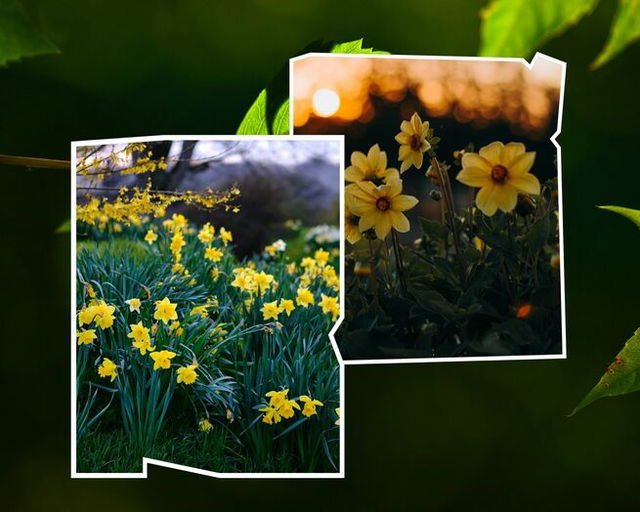 There are two birth month flowers of March: Daffodils and Jonquils.
There are two birth month flowers of March: Daffodils and Jonquils.
Daffodils are symbolic representations of spring's arrival and renewal. They signify new beginnings, rebirth, and rejuvenation as their blooming marks the end of winter, and it brings a fresh burst of color to nature.
Jonquils represent a fresh start and the end of winter, like other daffodils, welcoming the arrival of spring with renewal and rejuvenation. Their bright yellow or white blooms bring a feeling of joy and positivity, symbolizing the happy vibes that come with changing seasons. Additionally, jonquil's delicate and fragrant flowers convey affection and can be linked to creating special memories, often associated with love and care.
April: Daisy and Sweet Pea
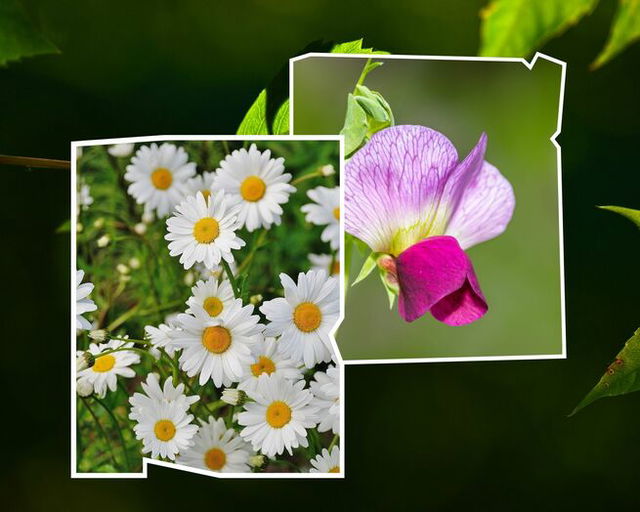 Daisies and sweet peas represent April birthdays.
Daisies and sweet peas represent April birthdays.
Daisies are used to express purity and innocence and reflect nature's simplicity and untarnished beauty. They also add a hint of mischief to them.
Sweet peas symbolize pleasure and bliss, highlighting life's delicate and delightful aspects. They suggest appreciating small, beautiful moments and finding joy in life's simple pleasures. Additionally, sweet peas can express gratitude, making them a thoughtful choice to convey appreciation and thankfulness.
May: Lily of the Valley and Hawthorn
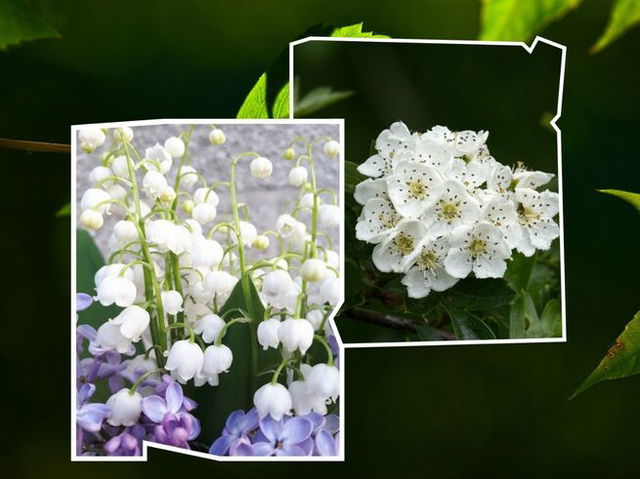 Lily of the Valley and Hawthorn are the special birth flowers of May.
Lily of the Valley and Hawthorn are the special birth flowers of May.
The pure and delicate nature of the bell-shaped flowers of the Lily of the Valley symbolizes sweetness and humility. It's further connected to the return of happiness and is said to bring joy and positive energy.
Hawthorn is a symbol of hope and protection, and it also represents love and unity in certain cultures. It has another connection with fertility and is sometimes included in May Day celebrations.
June: Rose and Honeysuckle
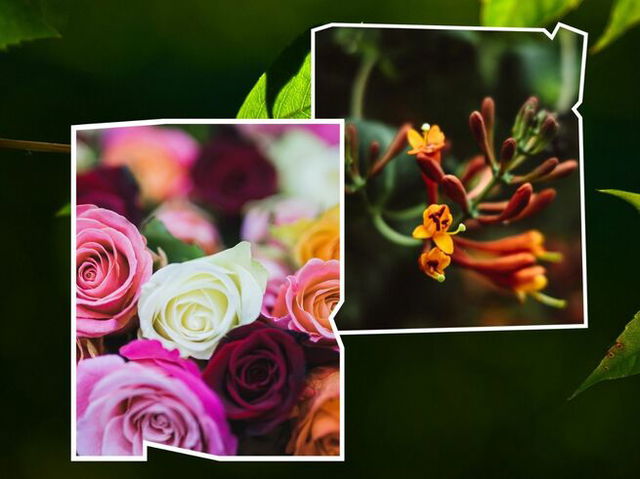 The eternal symbol of love, the rose is June's birth flower and with its array of colors, each shade means a different emotion as the rose perfectly captivates the uniqueness of June born. Red roses mean love, yellow means friendship, white means peace and orange represents desire.
The eternal symbol of love, the rose is June's birth flower and with its array of colors, each shade means a different emotion as the rose perfectly captivates the uniqueness of June born. Red roses mean love, yellow means friendship, white means peace and orange represents desire.
Honeysuckle, with its delicate and fragrant nature, represents sweetness and devotion. These flowers are associated with happiness and are believed to bring good fortune. They further symbolize long-lasting love. They embody the spirit of June, embodying themes such as love, romance, beauty, and vitality.
July: Larkspur and Waterlily
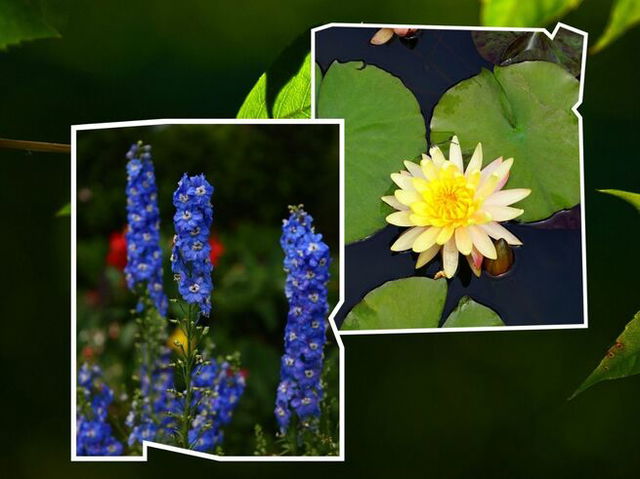 July's birth flowers, Larkspur and Water Lily, stand for strong love and emotional connection. Larkspurs symbolize an open heart and warmth, whereas Water Lilies symbolize purity, spiritual renewal, and finding beauty amid life's challenges.
July's birth flowers, Larkspur and Water Lily, stand for strong love and emotional connection. Larkspurs symbolize an open heart and warmth, whereas Water Lilies symbolize purity, spiritual renewal, and finding beauty amid life's challenges.
These flowers represent the core characteristics of July, expressing love, emotional attachment, openness, purity, spiritual enlightenment, and beauty in the face of challenges.
August: Gladiolus & Poppy
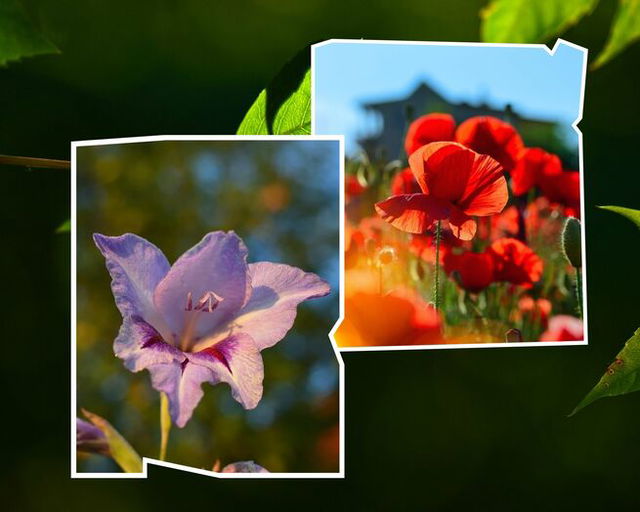 August's birth flowers are the majestic gladiolus and magnificent poppy.
August's birth flowers are the majestic gladiolus and magnificent poppy.
Gladiolus symbolizes strength, moral integrity, and sincerity; In ancient times, gladiolus also indicated magical powers. The gladiolus is also associated with affection and remembrance, making it a good option for remembering loved ones.
Poppies portray serenity and peaceful sleep, with red poppies specifically honoring those who sacrificed their lives in war. They embody the spirit of the month's significance by embodying strength, sincerity, remembrance, peace, and honor.
September: Aster and Morning Glory
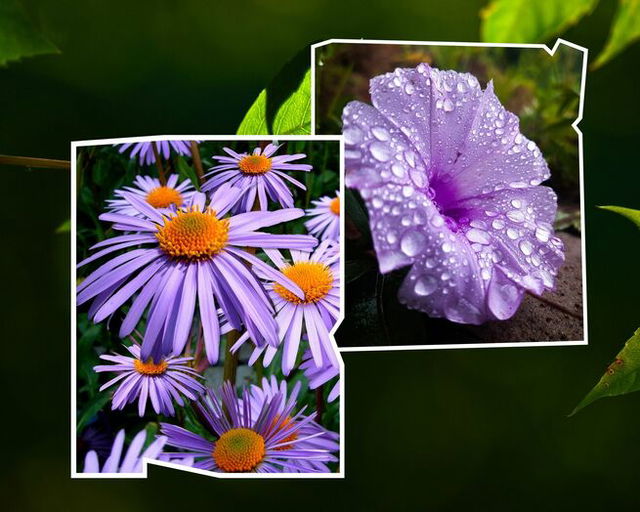 Aster and Morning Glory are the birth flowers of the ninth month of the year. Aster usually blooms during the beginning of fall and symbolizes passionate love, wisdom, and trust. It also indicates deep emotional connection and affection. Some cultures also associate it with fertility and good fortune.
Aster and Morning Glory are the birth flowers of the ninth month of the year. Aster usually blooms during the beginning of fall and symbolizes passionate love, wisdom, and trust. It also indicates deep emotional connection and affection. Some cultures also associate it with fertility and good fortune.
Morning Glories also portrays affection, yearning, and genuine and heartfelt emotions, conveying love and the unfolding possibilities found in the beauty of everyday life.
October: Marigold and Cosmos
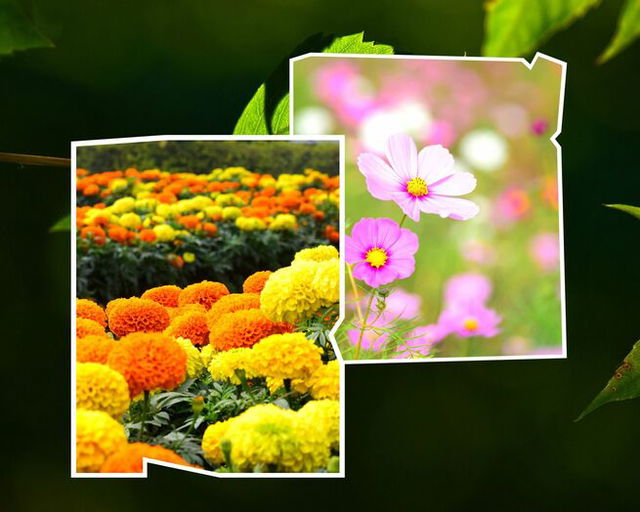 October's birth flowers are-Marigold and Cosmos.
October's birth flowers are-Marigold and Cosmos.
The marigold denotes passion and creativity, and its warm colors and rich symbolism make it a suitable choice for people born in the lively and fiery month of October.
Cosmos embodies harmony, balance, and a peaceful aura. Their snug glamour reflects finding serenity amid life's intricacies, making them a meaningful choice for expressions of eternal love during October.
November: Chrysanthemum and Peony
 Chrysanthemums and peonies are for people born in November.
Chrysanthemums and peonies are for people born in November.
Chrysanthemums have a lot of different meanings since they come in different hues, but they generally mean truthfulness, companionship, loyalty, happiness, and luck. It also reflects the cheerfulness and solidarity of November people.
Peonies usually reflect a prosperous, happy, and abundant life and are also associated with compassion, romance, and love. Some cultures also believe that peonies get rid of evil spirits and act as a protective shield. In Chinese culture, the peony is known as the “king of flowers” and symbolizes honor, wealth, and nobility.
December: Narcissus, Poinsettia, and Holly
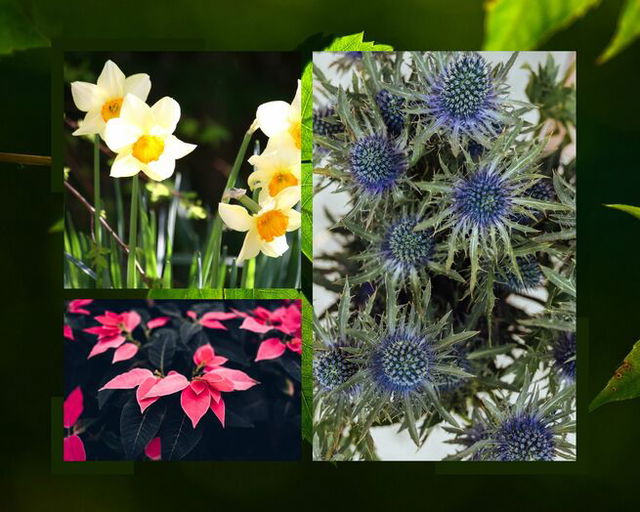 December's birth flowers: Holly, paper white Narcissus, and Poinsettia: embody the heart of the season. Holly brings festive cheer and protection, symbolizing positivity.
December's birth flowers: Holly, paper white Narcissus, and Poinsettia: embody the heart of the season. Holly brings festive cheer and protection, symbolizing positivity.
Paper white Narcissus means renewal and hope for a prosperous new year.
Poinsettia, an icon of holiday joy, adds a touch of celebration to December, making this trio a vibrant reflection of the month's festive and hopeful atmosphere.
Birth flowers are a cool way to show the personality traits of people born in different months. They can also make thoughtful birthday presents because each flower has a special meaning. So, the next time you're wondering what to give someone for their birthday, consider giving them a bunch of flowers that represent their birth month.







